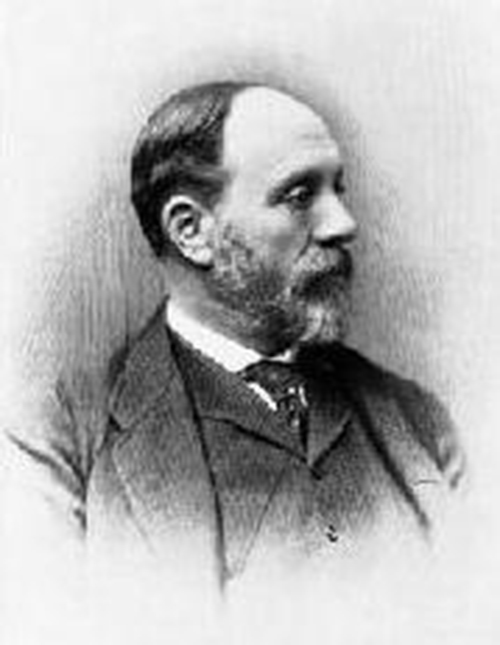immingham
Dock
The Background to Immingham Dock
The story starts around the turn of the twentieth century when the Directors of the Great Central Railway Company required additional quays to handle the ever increasing coal traffic at Grimsby. However, it was a group of local businessmen that lobbied Parliament for permission to build a second port alongside the thriving Port of Grimsby.
Incorporated under the Humber and Commercial Dock Acts of 1901 and 1904, the Humber Commercial Railway and Dock Company, formed by the consortium of businessmen, commissioned Sir John Wolfe Barry, the renowned dock and waterway engineer, to identify an appropriate location, and to design the new port. He eventually concluded that Immingham was the best site as the deep-water channel neared the south bank of the Humber at this point.

Sir John Wolfe Barry
Construction of the Dock
Amid great fanfare and pageantry, the work on the construction of the Port of Immingham was marked on 12 July 1906 when Lady Henderson, wife of Sir Alexander Henderson, Chairman of the Great Central Railway (GCR), ceremonially cut the first sod of the now Immingham Dock. The construction contract was awarded to Messrs Price, Wills & Reeve of Waterloo Place London, a company whose achievements included the construction of the Port of Barry.
Thousands of labourers were employed on the contract using primitive equipment compared with today’s standard to excavate 2.67 million cu m of earth to form the dock basin, together with 1.15 million cu u of spoil from the approach channel in the river. After six years of arduous work, the workforce had managed to build a 45-acre enclosed dock, an entrance lock, two deep-water jetties, three transit sheds, a grain warehouse, erect eight coal hoists, 14 hydraulic cranes and lay 170 miles of rail track.
All of this was funded by the GCR at a cost of £2.6 million, the equivalent to over £186 million in today’s money.
Excavating the dock basin
The Opening of the Dock
Opening ahead of schedule, the dock basin received its first commercial vessel, the Swedish-registered SS Max on 15 May 1912. However, the Port was officially opened two months later on 22 July by their Royal Highnesses King George V and Queen Mary. Departing from the north end of the lock, they completed a circular route of the dock basin on the P,S. Killingholme before disembarking alongside No. 2 transit shed.
In recognition of his work, Mr Sam Fay, General Manager of the GCR was called before the King and requested to kneel. Handed a sword, the King duly placed it on this shoulder, declared he had been knighted, and said ‘Arise Sir Sam Fay’.
King George V and Queen Mary aboard the P.S. Killingholme
Additions to the Dock since its original opening
Many of the structures that were originally constructed had been removed as the trade through the port has changed. Although the dock basin continued to be a dominant part of the Port, new facilities have been provided that extend out into the river. These are capable of handling larger vessels that cannot be accommodated in the enclosed dock. The Immingham Oil Terminal, built in 1969, handles, among other liquid commodities, the import of crude oil. The following year, on 6 July, a new bulk jetty was opened to handle the export of coal. The structure was later extended to accommodate the import of iron ore for the new Anchor project at Scunthorpe.
Developments along the waterfront have been prominent features over the last fifty years and have included the Immingham Gas Jetty constructed at the eastern end of the Port in 1985, and the Humber International Terminal. The later was by far the most ambitious providing a concrete jetty measuring 300 m in length by 35 m wide and equipped with three 100 tonne mobile harbour cranes. It was opened on 4 October 200 by Her Royal Highness, The Princess Royal, who returned six years later, on 31 May, to open the 220m extension.
Immingham Oil Terminal (ABP)
The Humber International Terminal (ABP)
The Port today
The Port of Immingham has changed significantly over the past century. It not only provides quays within the enclosed dock amounting to 198m in length, but also an additional 1,451m out in the river for the handling of vessels up to a maximum deadweight of 290,000 tonnes. It exists within an ever changing environment and in order to cater for this the Port has moved with the times expanding its roll-on/roll-off facilities from those first introduced by Tor Line in the 1960s.
Whilst the miles of track have substantially reduced over the years, the Port still handles more than 240 rail freight movements a week. Many convey biomass, a fuel which is seen as a more environmentally friendly fuel, in comparison to the burning of coal, in the power generating industry. The ability to respond to changing demands has enabled the Port of Immingham to become UK’s largest port for tonnage handled with over 46million tonnes passing over its facilities every year.